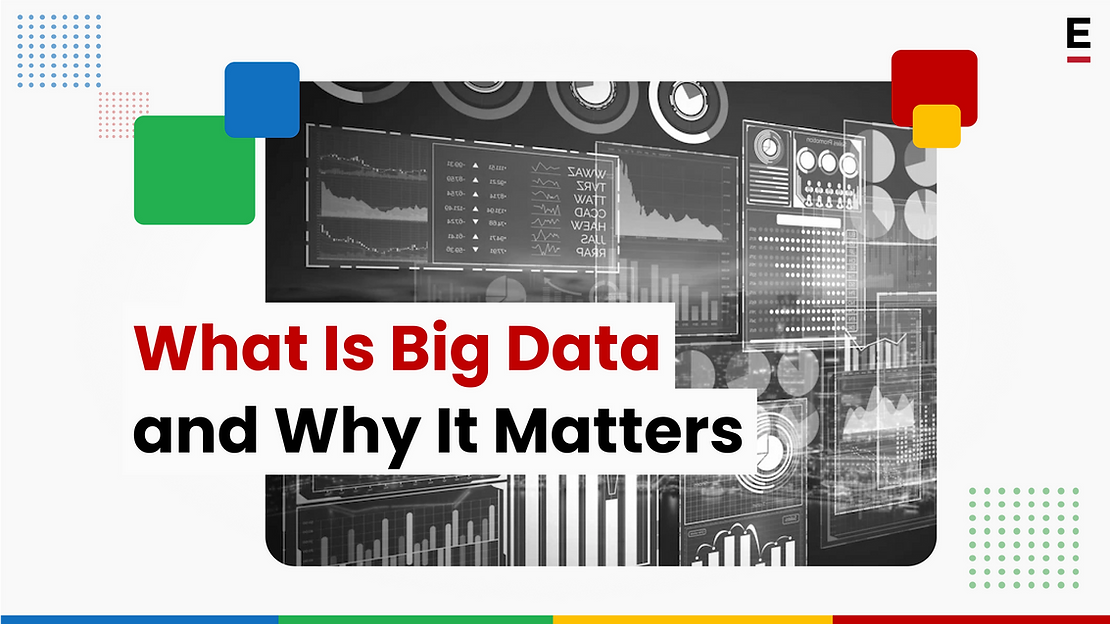Big Data isn’t only big in its volume but is far more complex and varied in nature. Our mobile devices, computers, and machine sensors generate billions of bytes that help organizations make decisions and stay ahead of the curve. As Chris Lynch from Vertica Systems says, “Big Data is at the foundation of all of the megatrends happening today, from social to mobile to the cloud to gaming.” The power of Big Data is not in the data that’s collected, but it is in the analytics and understanding of it. AI-ML and new-age database technologies enable Big Data visualization and analysis to deliver real-time actionable insights – a boon for all industries today.
At Extentia, our intent in putting together this blog is to help learn the basics of Big Data. The upcoming blogs in this series will give a deeper insight into this area, so let’s jump right into it. This blog is for you if you are a developer, an IT professional, or a Big Data enthusiast.
What is Big Data?
In Big Data, volumes are high, and growth is exponential. It is a dataset that is so large and complex that it cannot be stored or processed efficiently using conventional data management tools. A Big Data set is also significant, but it is much larger and measured in terabytes or petabytes.
To understand this better, some real-life examples of Big Data are,
The Social Media Universe – Putting together a general estimation of comments, pictures, and videos posted on social media platforms like Instagram daily, the data analysis will quickly fall under the Gamut of Big Data since such astute amounts of data cannot be quantified as data.
Stock Exchange – Similarly, when analyzing stock exchange data, such as those recorded on the India Stock Exchange or NYSE during a single day is considered Big Data.
Types of Big Data
Data is diverse and generated from many defined and undefined sources. As a result, we need a nuanced approach to storing data, depending on its type. Broadly, the Big Data depositories are divided into six types – Unstructured, Semi-structured, Structured, Geospatial Data, Machine Data, and Open-Source Data. Today, we will talk about the first three.
1. Structured Big Data
‘Structured’ data, also known as relational data, is any data that is accessible, readable, and processable in a fixed format within a record. This is the data we mainly use in our everyday lives. A simple example of a structured form of Big Data is employee information in a large organization. Other forms of structured data are dates, numbers, strings, etc. In e-commerce websites, business data also comes under this category.
2. Unstructured Data
Unstructured data is any data with no known form or structure. Processing and analyzing unstructured data is challenging for organizations in determining value-based analysis. A simple example of unstructured data is search outputs by a search engine.
3. Semi-Structured Big Data
A fusion of structured and unstructured data, semi-structured data is often seen as data with a structure that needs to be better defined. Thus, it poses challenges when organizations want to derive value from it. No data handling schema does not bind it. You will never find semi-structured data organized in a format or type. Semi-structured data requires no structured query language; thus, it is called NoSQL data. This form of data is mostly used to hold business process metadata, but it can also comprise files containing machine instructions for software programs.
The geospatial Big Data type aligns itself to informing on occasions, events, or other features of things located on or close to the earth’s surface; could be static such as the occurrence of an earthquake, or dynamic such as a spreading of an infectious illness. The machine Big Data type implies the data generated by computers used daily in small shops, companies, and offices in any and all industries, such as call records or log files. Open-Source Big Data type is the data that’s crucial to the organizations in software. One example of this type is Google public data explorer.
Why Big Data Matters?
Most organizations today are adopting a Big Data framework as it helps them make informed business decisions to improve their work operations, client delivery, and customer experiences. Big Data analysis is further used to create personalized campaigns targeted to their market segment and target audience as well as to Innovate, grow and thus increase their revenues and gain a competitive edge. It helps organizations better understand their customers, their needs, shifting priorities, and preferences and thus helps them better modify their products, services, and campaigns to target their audience and increase conversion rates.
Not only for increasing profit margins, but Big Data also plays a critical role in the medical field. Medical researchers widely use Big Data for disease identification, the key signs and symptoms of illnesses in their patients. And we are all well aware that timely diagnoses can play a crucial role in increasing a patient’s chance of recovery. Additionally, healthcare organizations and government agencies globally can stay updated about any critical illness or infectious disease outbreak from social media data, the web, and digital health records, thanks to the Big Data revolution.
Big Data has gained traction with organizations both large and small. Listed below are a few examples of how organizations across the world are using Big Data:
A utility company uses Big Data to track electric grids, while oil and gas companies use it to identify potential drilling sites.
Financial services firms can analyze market data in real time using Big Data systems.
The government also uses smart cities to prevent crime and respond to emergencies.
Stay tuned to our next blog post to learn more about the key characteristics of Big Data, its evolution, types, in-depth detail, and work.




